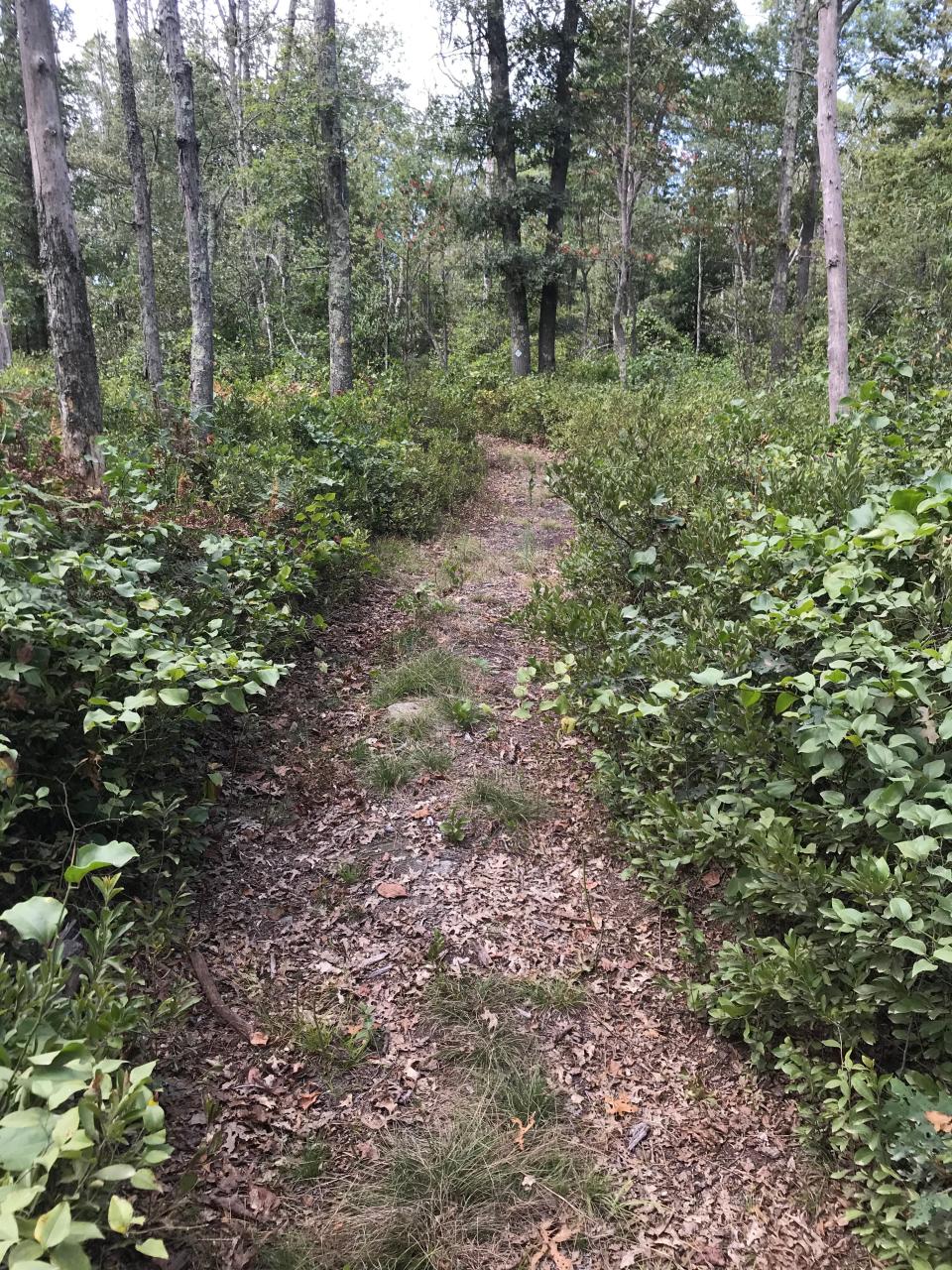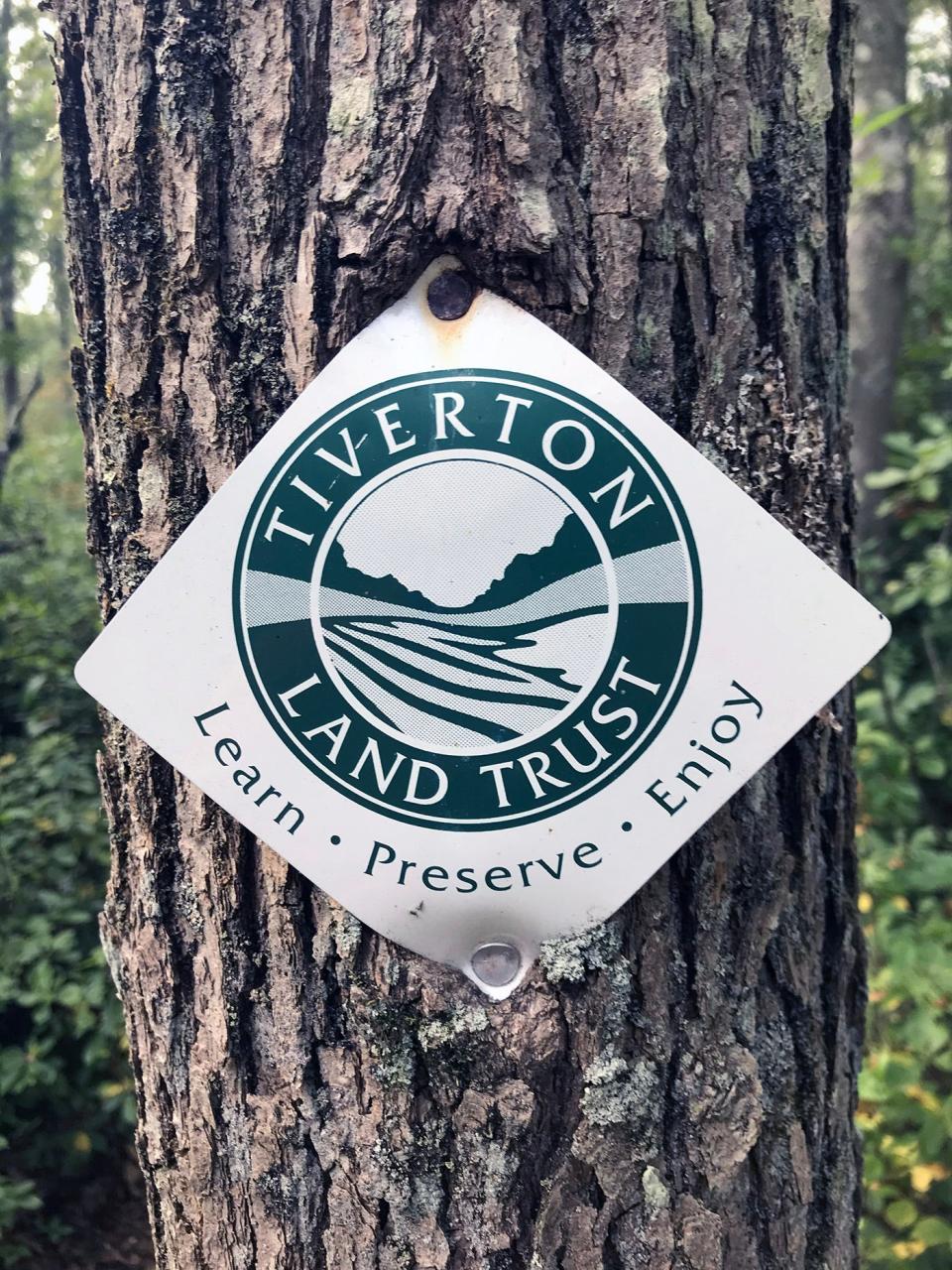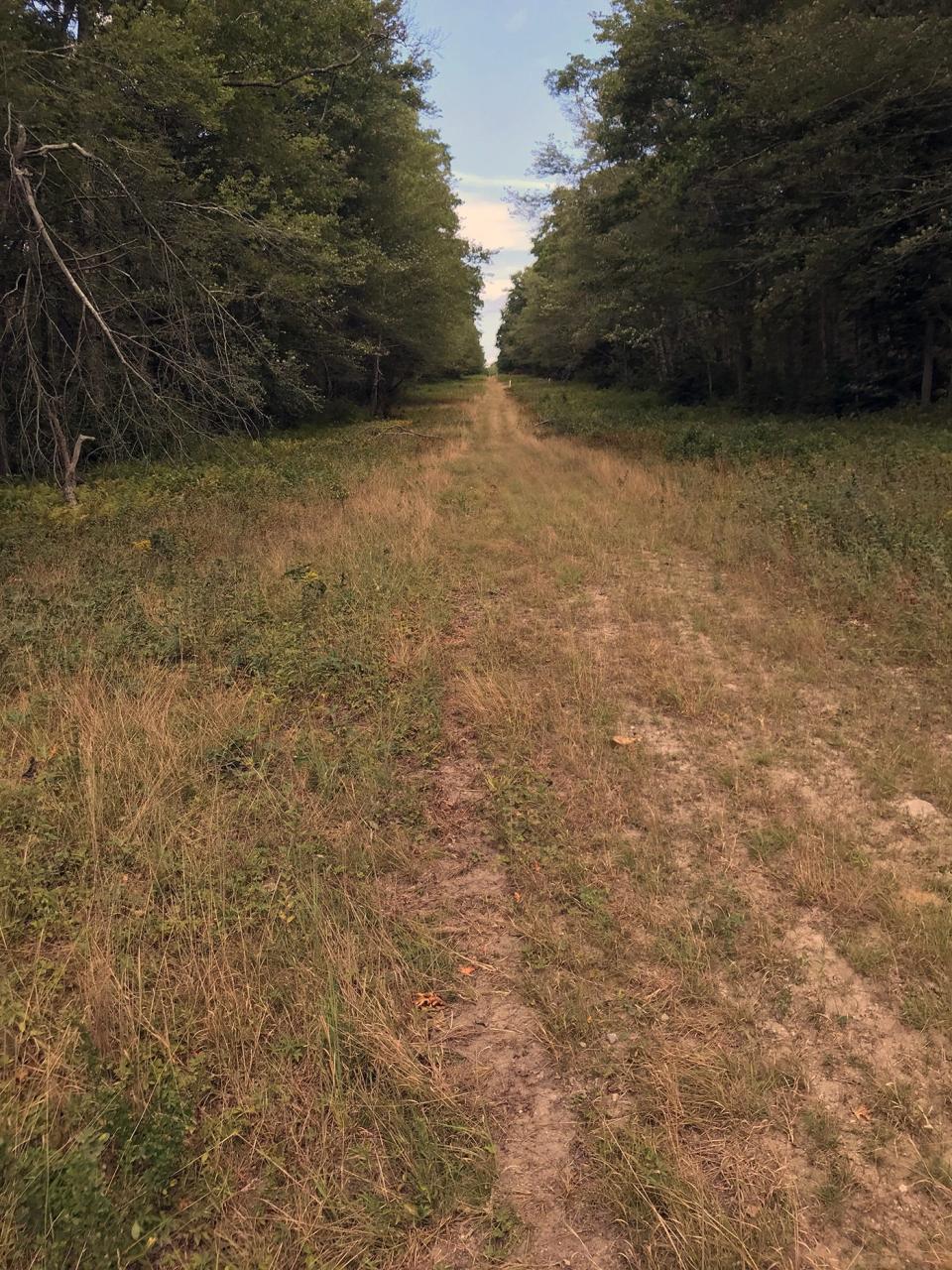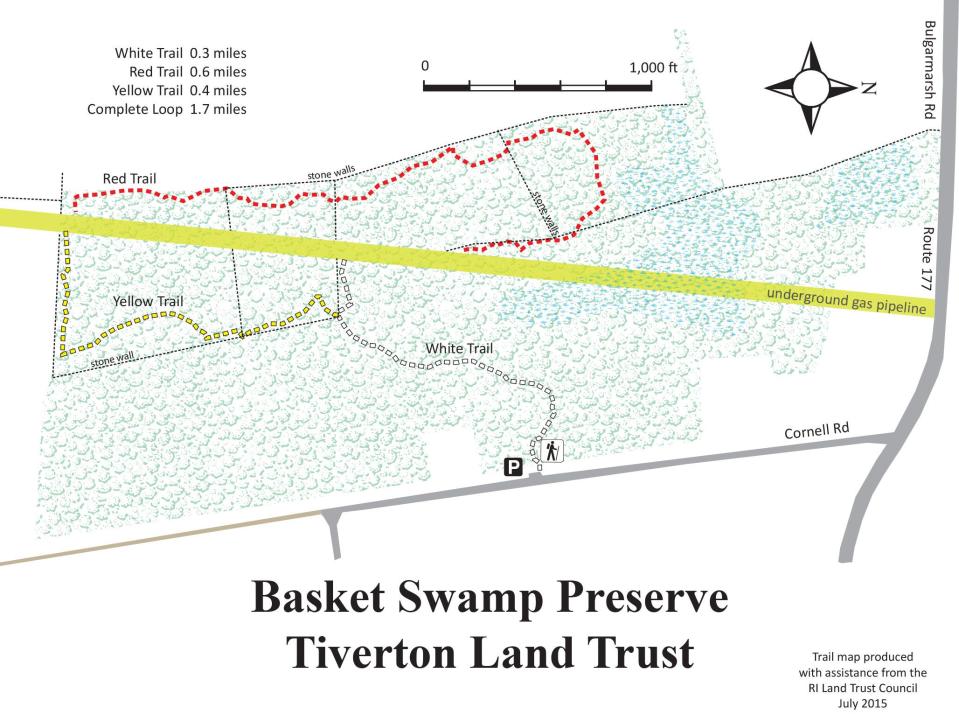What's missing from Tiverton's Basket Swamp? A key tree for Native peoples | Walking RI

TIVERTON — Black ash trees once thrived here in the forested wetlands that became known as Basket Swamp.
The name derives from a time when Native Americans harvested the trees to make baskets. They soaked the trees in water and then pounded them with wooden mallets to separate the annual growth rings into thin, pliable layers, which were cut into strips and woven into baskets.
The black ash trees, also called basket ashes, have all but disappeared in Tiverton now, and the area where they once grew has been shrunk by development.
A 96-acre swath, however, has been protected by the Tiverton Land Trust, which has opened the Basket Swamp Preserve to the public. Hikers can take a short loop trail through the sanctuary to get some exercise and, if they choose, learn about the history of the area. I decided to do both.
Walking RI: Hike along the Narrow River at former Girl Scout camp in North Kingstown
Walking RI: Drought bares hiking trails often under water near Brushy Brook in Exeter
Are the black ash trees gone for good?
Setting out from the trailhead on Cornell Road, I followed a white-blazed trail a short distance down a gentle slope to a kiosk with information about the preserve and the black ash trees. While they no longer grow in the swamp, two of the trees have been identified in nearby Fort Barton Woods, and there are ongoing plans to reintroduce them in the area.
Walking RI: The haunting legacy of Tiverton's Fort Barton Woods
Walking RI: Hike the 'Big Hill' in Cumberland, where skiing was once a favorite winter pastime in RI
Just off the trail is an unusual type of boulder made of puddingstone, a sedimentary rock that is a conglomerate of small, round pebbles held together with a sandy cement.
The trail continued downhill and through an oak-holly hardwood forest, a narrow band of holly and oak trees that grows in moderate climates along the coast from Long Island to Massachusetts.

When I came to a junction, I turned left and headed south on a yellow-blazed footpath that flattened and wound through a dry, oak-pine woodland. Soft pine needles covered the path, which was occasionally heavily rooted and covered with dense, green ferns. I crossed several low stone walls, probably built by farmers to mark property lines or create pens and pastures.
Walking RI: Discover a hidden gem of forest, ponds and wetlands in Little Compton
Walking RI: Spectacular bay views and Colonial and tribal history at Mount Hope Farm
Walking RI: 5 great hikes with ocean views

Solar farm planned for neighboring property
At the southern end of the preserve, the trail took a sharp turn westward. To the left, an old farm road led onto private property. Through the trees I could see a large open field with two huge mounds of gravel that will be used to develop the property as a large solar farm.
The trail proceeded along the southern border of the preserve and reached a wide, grassy lane cleared for an easement for an underground gas line. There was a gate on the left and behind that more fields. I crossed the easement and picked up the start of the red-blazed trail that ran along the back edge of the property.
Continuing north, the trail ran parallel to a stone wall before curling to the east through birch and sassafras trees, woodland ferns and some thick brush that in places overgrew the trail.
Walking RI: Discover why hikers and anglers love the 'wild and scenic' Beaver River
Walking RI: Want to practice some rock climbing? Head to Connors Farm in Smithfield

I scrambled over several downed trees and at one point scratched my forearms on some thick, thorny vines that crept across the path. (A land trust representative said the downed trees and heavy bushes had been cleared after my hike.)
Stopping to rest, I pulled out a map and learned that Adamsville Brook runs west of the trail and is a principal tributary of the west branch of the Westport River. The stream creates a lush corridor through the lowlands.
I also learned that Basket Swamp once extended far north of the preserve, according to maps from the mid-1800s, and that the area had several names. A map from 1831 called part of the area Hellburn Woods and others know the property as Sandywood. Over the years, some of the land was cleared and developed and other wetlands were filled in.
Walking RI: Leave the noise behind at a wooded retreat in Richmond
Walking RI: Follow in the footsteps of Trappist monks in Cumberland
Why is it important to preserve swampland?
When the Tiverton Land Trust bought the property in 2009 from Dr. Joseph Bossom and Mika Seeger, local officials pointed to the significance of swampland and how it was vital to Tiverton.
Besides protecting biodiversity, swamps prevent flooding by soaking up heavy rains and then holding the water to replenish groundwater, which is important to the private wells in southern Tiverton. In addition, the streams from and near the wetlands flow into drinking water supplies at Nonquit Pond and the Westport River.

The wetlands also once provided a rich environment for the growth of trees and vegetation, including black ash trees, which are also known by the scientific name of fraxinus nigra.
The trees were dark, bluish-black in color, and easily distinguishable from white or green ash trees. They could grow 40 to 60 feet high and 2 feet wide. The Indigenous peoples called them by various names, including swamp ash, basket ash, brown ash, hoop ash and water ash.
Walking RI: Tillinghast Pond's trails are part of something special and well worth a visit
Walking RI: Mingle with birds, beavers, mink and more at Exeter's Fisherville Brook refuge
Walking RI: Ninigret National Wildlife Refuge harbors naval, tribal history
Baskets and more: What Native peoples made from black ash trees
Native Americans highly valued the unique black ash for a variety of practical purposes. Besides their use in making baskets to gather and carry crops from the fields or to store clothing, the pliable wood could be separated along annual growth rings and permanently bent for barrel hoops, snowshoe frames, canoe ribs and material for woven chair seats.
Black ash trees grew throughout the Northeast and were harvested by several Native American tribes. Besides the Pocassets, part of the Wampanoag nation, who lived in Tiverton, other basket-makers in the country included the Mohawk, Seneca, Onondaga, Cayuga, Oneida, Tuscarora, Penobscot, Micmac, Maliseet, Passamaquoddy, Anishinaabe and the Abenaki.
Walking RI: Looking for a great birdwatching spot? Try this former Navy site in North Kingstown
Walking RI: A step-by-step guide to beautiful Stepstone Falls
Walking RI: Best place for a hike and osprey spotting? Try the Great Swamp in South Kingstown
The black ash trees also figured into some tribal legends.
One story passed down by the Anishinaabe is about the dream of a leader named Black Elk, who left instructions to burn his body and spread the ashes in the place where a special tree grew so that the people would have the wood to provide for their families by making and trading baskets.
The more I found out about black ash trees, the more I realized it's a shame they are gone from the area. They must have been quite a sight.
While thinking about all that history, I continued on the red-blazed trail, which turned south and returned to the easement. I walked about 500 feet down the cleared strip of land before seeing a marker for the white-blazed trail on the left. I ducked back into the woods and took the path uphill to return to where I had parked.
Walking RI: Retracing Thoreau's 1854 hike through Providence
Walking RI: Take in the fragile beauty of Warren's Touisset Marsh during a coastal hike
Walking RI: At Trustom Pond in South Kingstown, silence is golden
In all, the 1.5-mile loop, with a few side spurs and stops, took me about 90 minutes.
The Basket Swamp Preserve isn’t as well known or as well hiked as the nearby Weetamoo Woods and Pardon Gray Preserve, which also are rich in history. But I enjoyed the walk and learned quite a bit.
Now, if I could just get a good look at a black ash tree …
Trail Tip
Basket Swamp Preserve is open from dawn to dusk.
Visitors are asked to stay on the trails and carry out what they carry in.
Camping, fires, paintball guns, metal detectors and the removal of wood, stones, soil or artifacts is not allowed in the preserve.
John Kostrzewa, a former assistant managing editor/business at The Providence Journal, welcomes email at johnekostrzewa@gmail.com.
This article originally appeared on The Providence Journal: Tiverton's Basket Swamp once held precious resource for Native tribes

